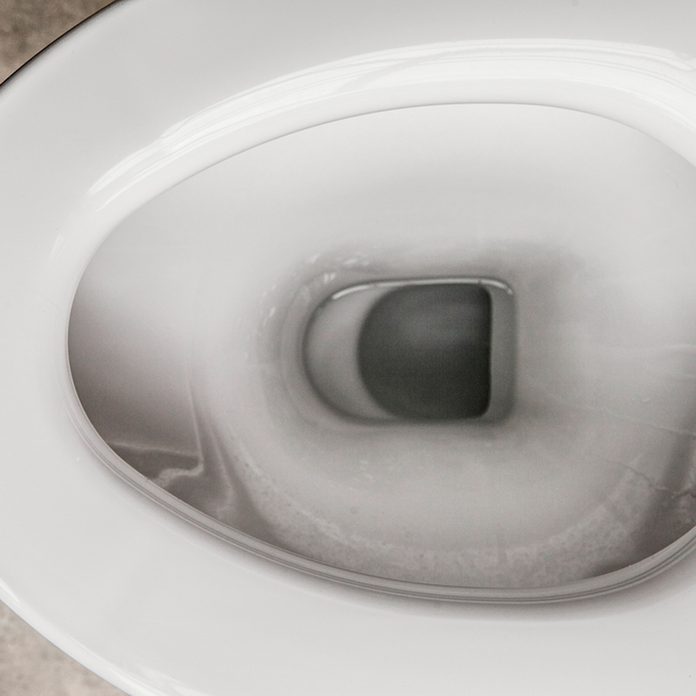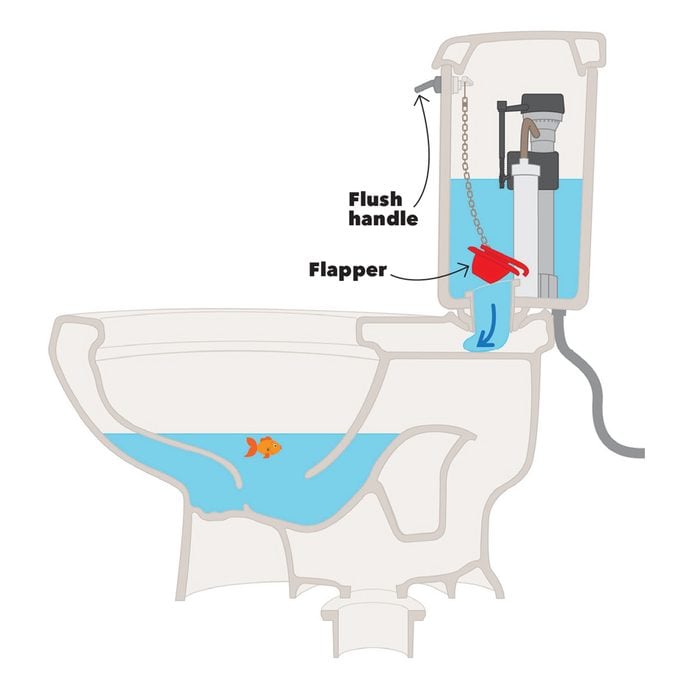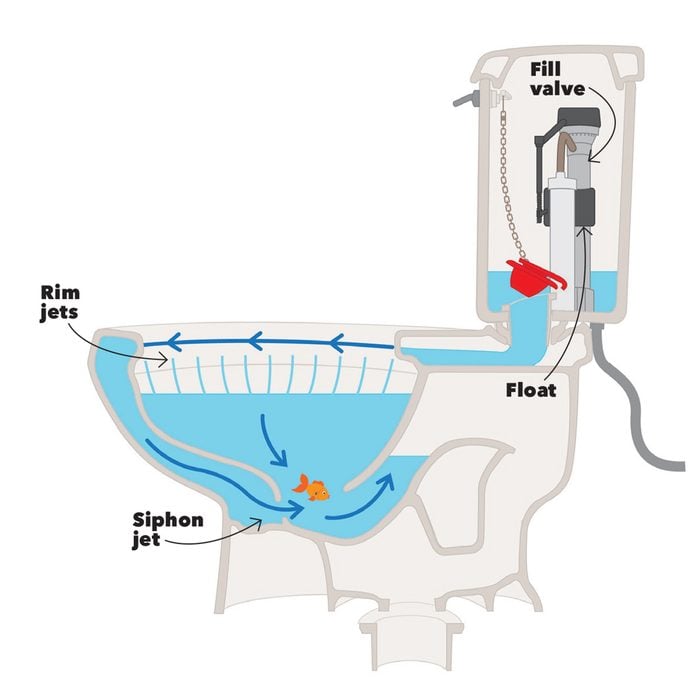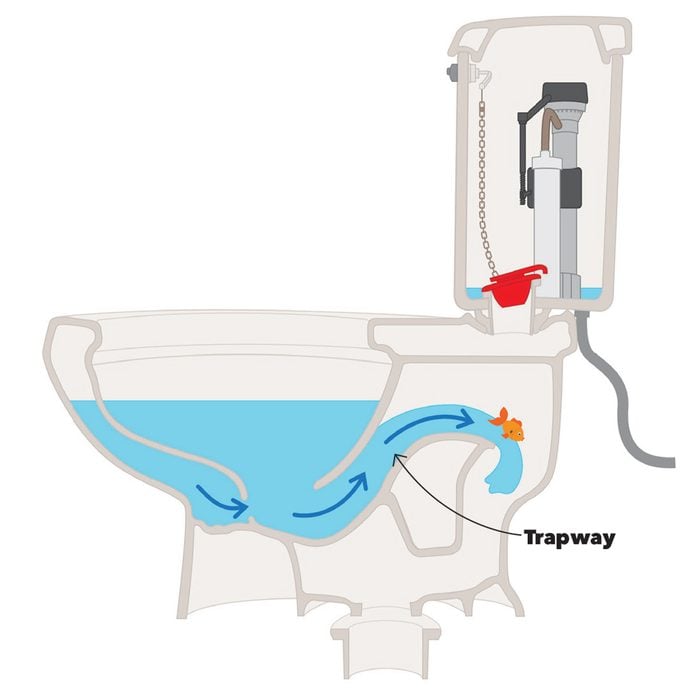
Possibly the most used yet most taken for granted household fixture, the toilet is a marvel of engineering simplicity. Even typical modern toilets still employ just a couple basic mechanical components. The rest of the flush relies on the natural forces of gravity and siphoning action.
But sooner or later, every toilet develops problems like weak flushing, clogs or constant running. When that happens, most homeowners just live with the problem or pay a plumber a lot for a simple fix. You don’t have to. If you know how a toilet works, you can diagnose and solve problems yourself, often in just a few minutes. So let’s lift the lid to see the magic that happens in the bowels of this underappreciated fixture.
Watch this video to see how a toilet works:

1. The Flush Handle Lifts the Flapper
The flush handle is pressed, lifting the flapper, setting in motion about 10 seconds of flushing genius. Plus: Learn how to fix a running toilet yourself here.

2. Water Rushes to the Bowl
The lifted flapper releases tank water into the bowl via rim jets and the larger siphon jet. The float drops as the tank empties, opening the fill valve, and the flapper drops back onto its seat.
Did you know some old homes have a random toilet in the basement? Find out why here.

3. Gravity Happens
The bowl fills, and gravity forces water into the trapway, causing it to overflow the top of the trapway.

4. Water and Waste are Siphoned Out
Water rushing over the top of the trapway creates suction, evacuating the waste and water from the bowl. As the water is pulled from the bowl, air enters the trapway, ending the siphon effect and also the flush. Plus: Never, ever flush these 12 things down the toilet.

5. The Refill
Water rushes back into the tank via the fill valve, which is connected to the water supply line. The refill tube sends water down the overflow tube to the bowl.

6. Ready for Next Time
As the tank water rises, it lifts the float until it shuts off the fill valve. The water in the bowl and the water in the trapway reach a common level, just below the top of the trapway. Check out our best toilet buying tips here.

Inside the Tank
The mechanical parts work in harmony with the natural forces of gravity and siphoning in the bowl and trap to create that familiar, satisfying sound of a complete flush. Next, check out 14 toilet problems you’ll totally regret ignoring.
